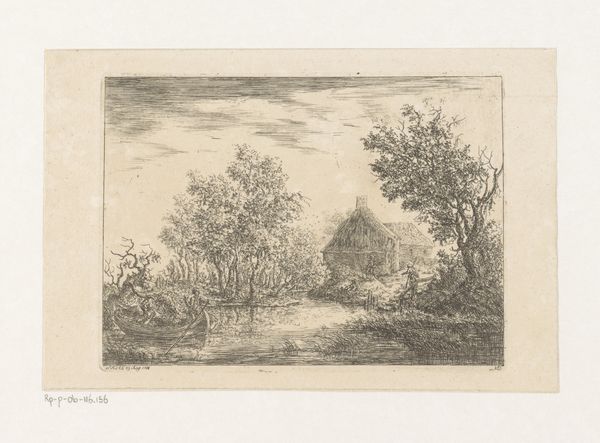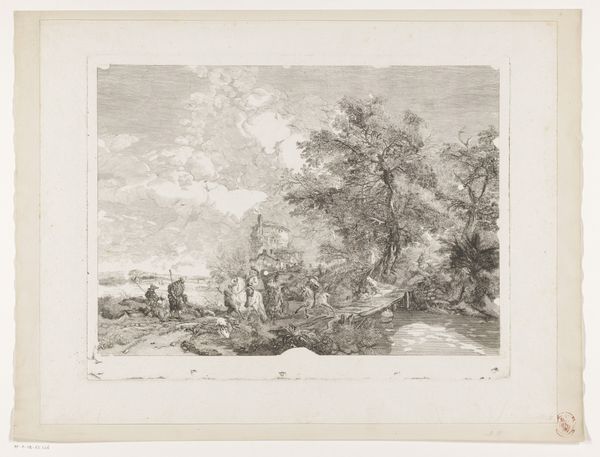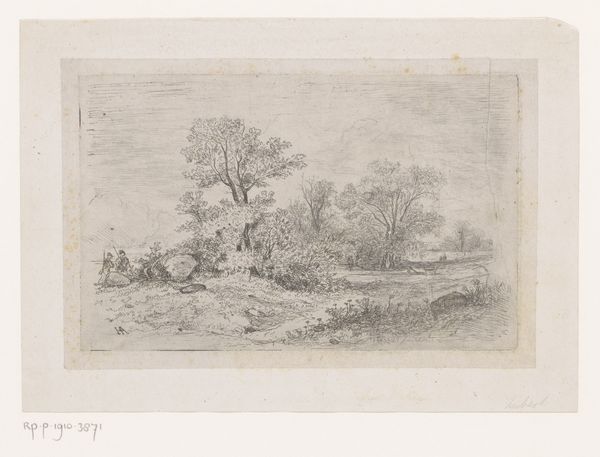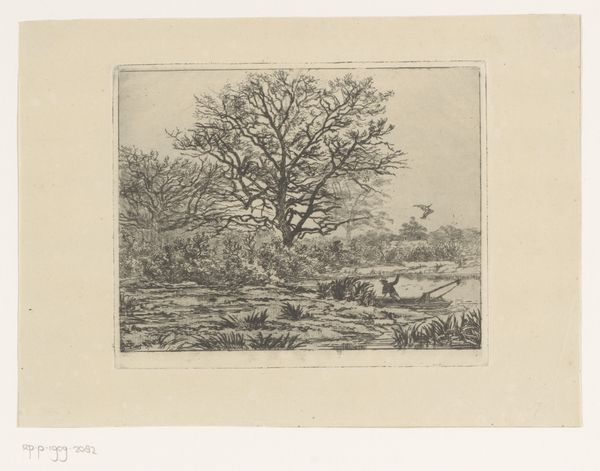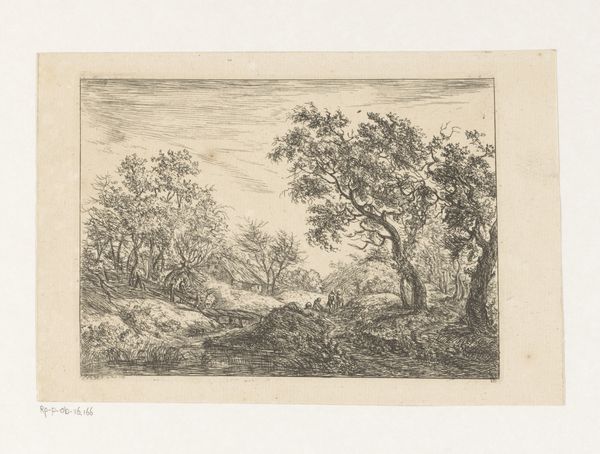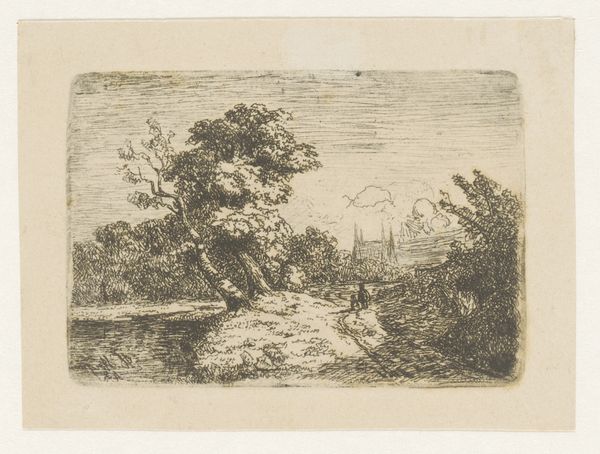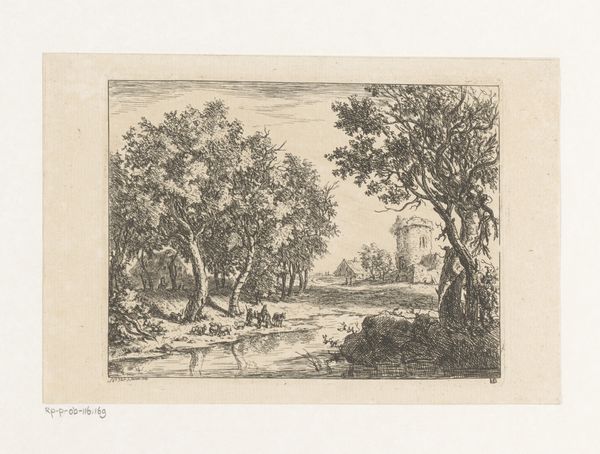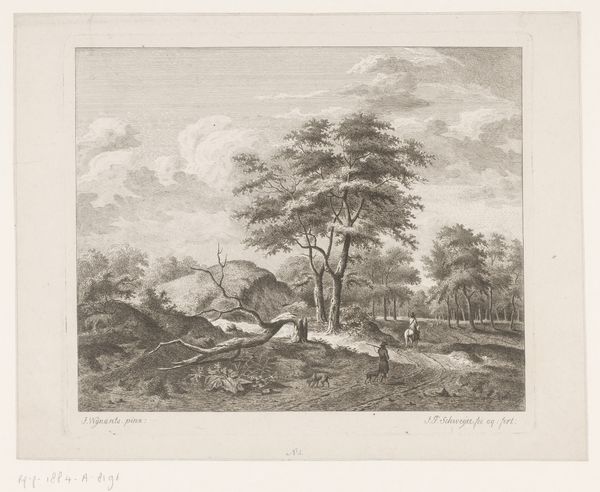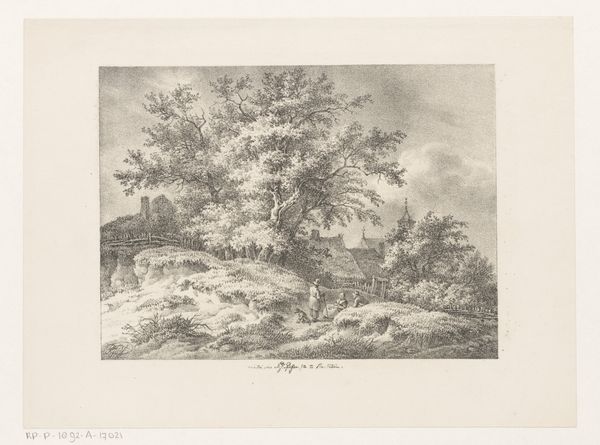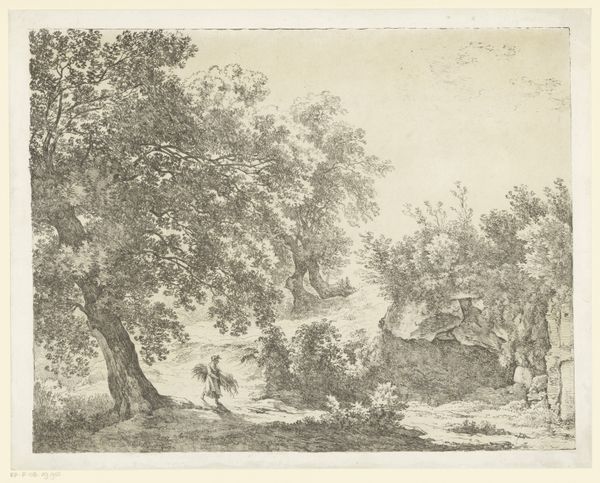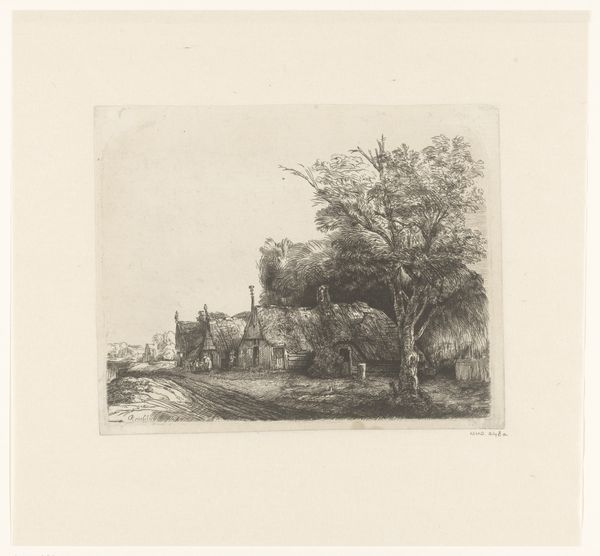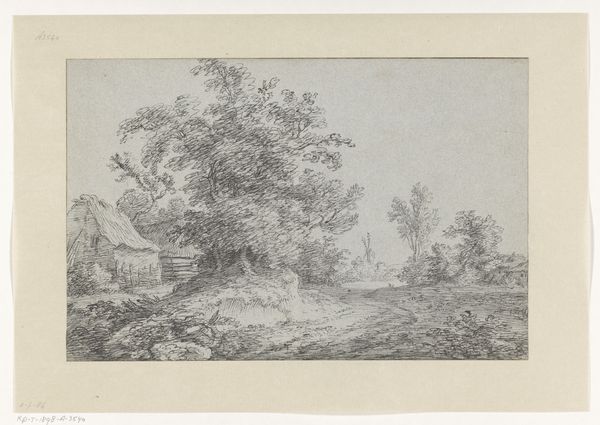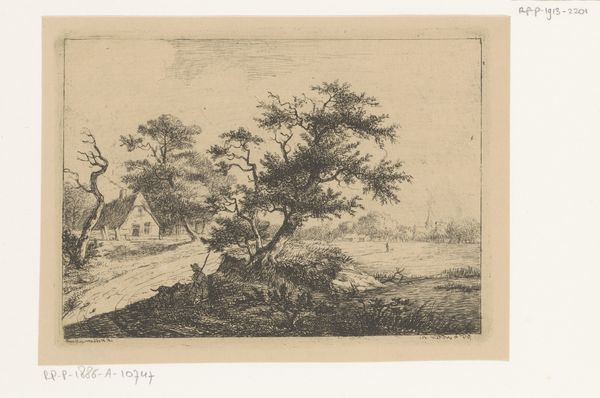
Dimensions: height 159 mm, width 217 mm
Copyright: Rijks Museum: Open Domain
Editor: This is "Landscape with an Angler Under Willows" by Maria Vos, made in 1866. It’s a pencil drawing, and it has this very peaceful, almost melancholic mood to it. The detail is really striking. What strikes you about it? Curator: I am drawn to the artist's process itself. The visible layers of graphite, the deliberate build-up of tone – these choices weren't arbitrary. They reveal a conscious engagement with the materiality of pencil and paper. Vos used readily available materials to participate in artistic production and possibly make her artwork accessible to a wider audience and economic background. Editor: So you are focusing on the humble pencil as an artistic statement? I find that so interesting because often we see drawings just as studies for paintings. Curator: Precisely. The conscious choice of pencil, and its masterful application, elevates this drawing beyond a mere preliminary sketch. What kind of labor do you think this drawing represents? What would its sale represent, and for whom would this piece be purchased? Editor: Well, it seems like it involved a lot of patience and close observation... perhaps reflecting the artistic movements, and the rise of "plein air" works depicting reality with precision. It wasn’t for the wealthy elite but a more accessible kind of art, with a direct relationship with everyday environments and the rise of leisure culture? Curator: Exactly. And think about the market for landscapes at this time. Landscapes became a consumer product that democratized art production and challenged preconceived values in artmaking. Did anything change in how you view this landscape by thinking through production methods? Editor: Definitely! It makes me appreciate the artistry even more. I will focus on materials as social artifacts more often from now on. Thank you. Curator: A worthwhile investigation, indeed.
Comments
No comments
Be the first to comment and join the conversation on the ultimate creative platform.
